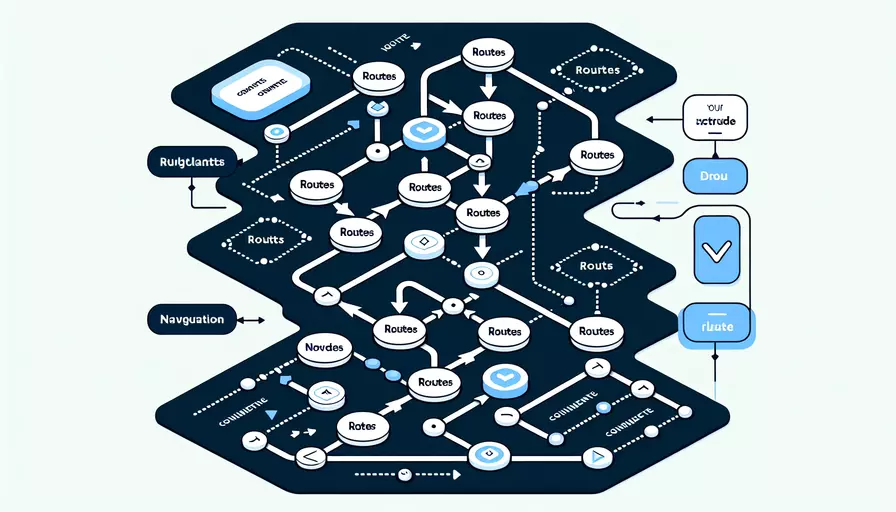
在Vue.js中实现多级路由跳转的核心步骤包括:1、配置路由,2、嵌套路由,3、使用导航守卫。通过这些步骤,您可以在Vue.js应用中轻松管理和实现多级路由的跳转。
一、配置路由
首先,您需要在Vue.js项目中配置路由。Vue Router是Vue.js官方的路由管理器,它使得构建单页面应用程序变得十分简单。为了配置多级路由,您需要先安装Vue Router并进行基本配置:
import Vue from 'vue';
import Router from 'vue-router';
import ParentComponent from '@/components/ParentComponent';
import ChildComponent from '@/components/ChildComponent';
import SubChildComponent from '@/components/SubChildComponent';
Vue.use(Router);
const routes = [
{
path: '/parent',
component: ParentComponent,
children: [
{
path: 'child',
component: ChildComponent,
children: [
{
path: 'subchild',
component: SubChildComponent
}
]
}
]
}
];
const router = new Router({
routes
});
export default router;
在上述代码中,我们定义了一个父路由和两个嵌套路由。每个路由都有自己的path和component,这样可以清晰地管理路由层次结构。
二、嵌套路由
嵌套路由是多级路由的关键。为了使嵌套路由生效,需要在父组件中使用<router-view>。这是一个占位符,用于渲染匹配的子组件:
// ParentComponent.vue
<template>
<div>
<h1>Parent Component</h1>
<router-view></router-view>
</div>
</template>
// ChildComponent.vue
<template>
<div>
<h2>Child Component</h2>
<router-view></router-view>
</div>
</template>
// SubChildComponent.vue
<template>
<div>
<h3>Sub Child Component</h3>
</div>
</template>
通过在父组件和子组件中使用<router-view>,您可以确保Vue Router能够正确渲染嵌套的子组件。
三、使用导航守卫
导航守卫提供了在路由跳转时执行特定逻辑的能力。您可以在全局、路由级别或组件内定义导航守卫。例如,如果需要在用户访问某个特定路由前进行身份验证,可以使用全局前置守卫:
router.beforeEach((to, from, next) => {
// 检查目标路由是否需要身份验证
if (to.matched.some(record => record.meta.requiresAuth)) {
// 如果用户未登录,跳转到登录页
if (!isLoggedIn()) {
next({
path: '/login',
query: { redirect: to.fullPath }
});
} else {
next();
}
} else {
next();
}
});
导航守卫使得多级路由的跳转更加灵活和安全。
总结
通过配置路由、嵌套路由和使用导航守卫,您可以在Vue.js应用中实现高效的多级路由跳转。这不仅使您的应用结构更加清晰,还提高了用户体验。在实际应用中,建议结合具体需求进一步优化路由配置和导航守卫逻辑,以满足不同的业务场景。
相关问答FAQs:
1. 如何在Vue中进行多级路由的跳转?
在Vue中,可以使用<router-link>组件或this.$router.push()方法来进行多级路由的跳转。
使用<router-link>组件:
<router-link :to="{ path: '/parent/child' }">跳转到子路由</router-link>
使用this.$router.push()方法:
this.$router.push('/parent/child');
这两种方式都可以实现多级路由的跳转。
2. 如何传递参数进行多级路由的跳转?
在进行多级路由跳转时,有时需要传递参数给目标路由,可以在to属性中添加params参数进行传递。
使用<router-link>组件:
<router-link :to="{ path: '/parent/child', params: { id: 123 } }">跳转到子路由并传递参数</router-link>
使用this.$router.push()方法:
this.$router.push({ path: '/parent/child', params: { id: 123 } });
然后在目标路由的组件中,可以通过this.$route.params来获取传递的参数。
3. 如何在多级路由之间进行返回操作?
在多级路由跳转后,有时需要返回到上一级路由,可以使用<router-link>组件或this.$router.go()方法进行返回操作。
使用<router-link>组件:
<router-link to=".." replace>返回上一级</router-link>
使用this.$router.go()方法:
this.$router.go(-1);
其中,replace属性用于替换当前路由历史记录,避免返回后再次进入目标路由。
这样,就可以在多级路由之间进行返回操作了。
文章标题:vue多级路由如何跳转,发布者:worktile,转载请注明出处:https://worktile.com/kb/p/3636375

 微信扫一扫
微信扫一扫  支付宝扫一扫
支付宝扫一扫 